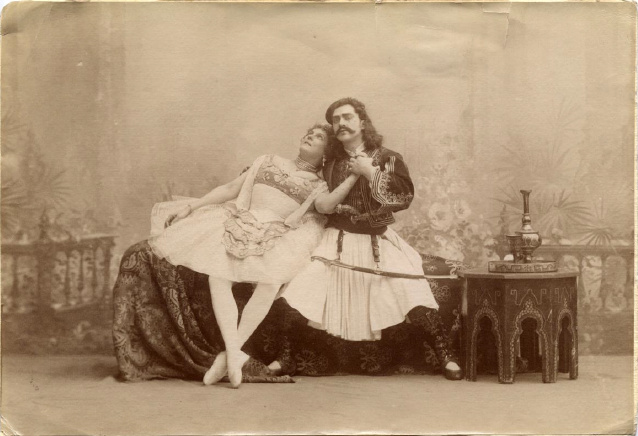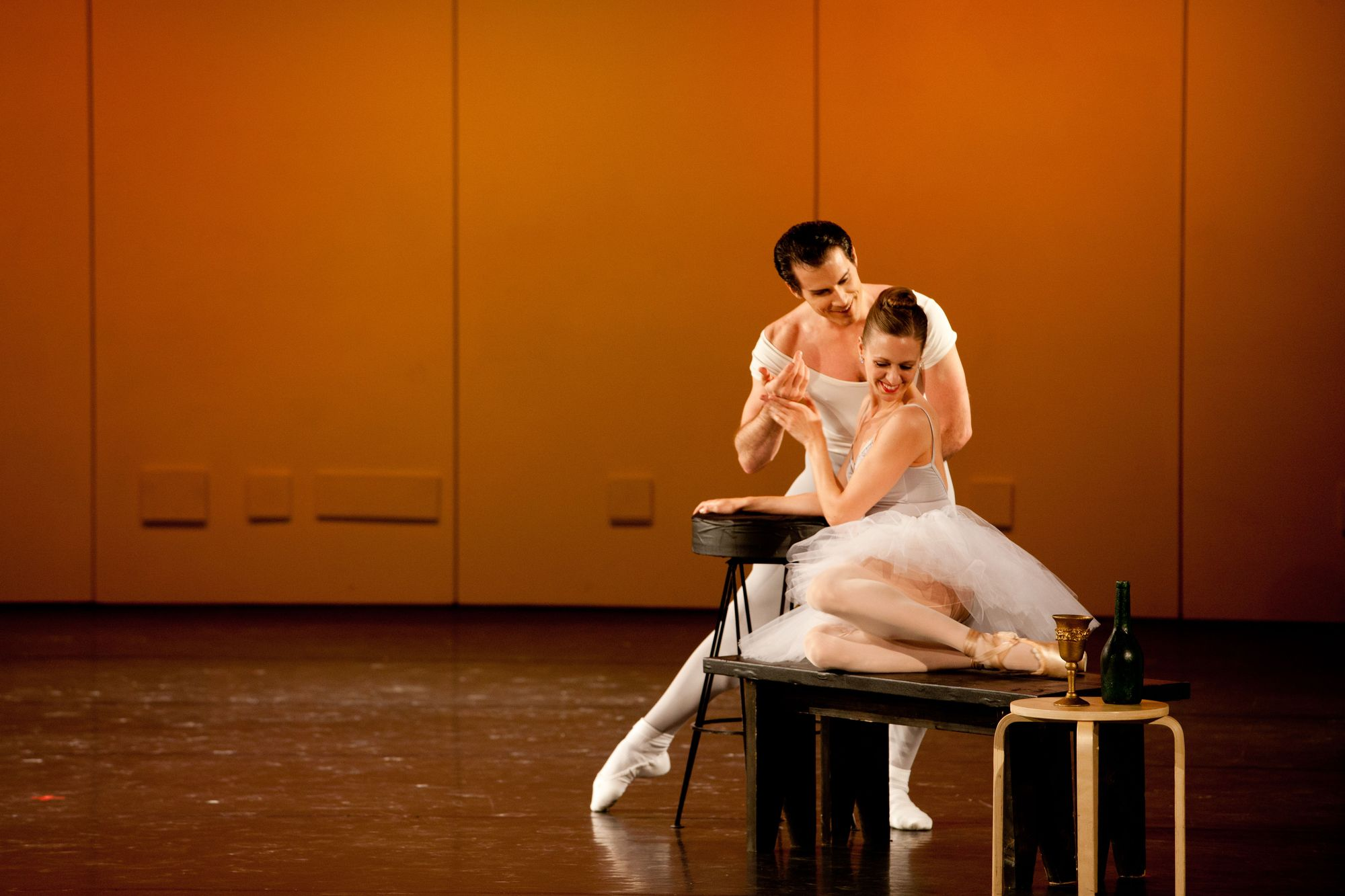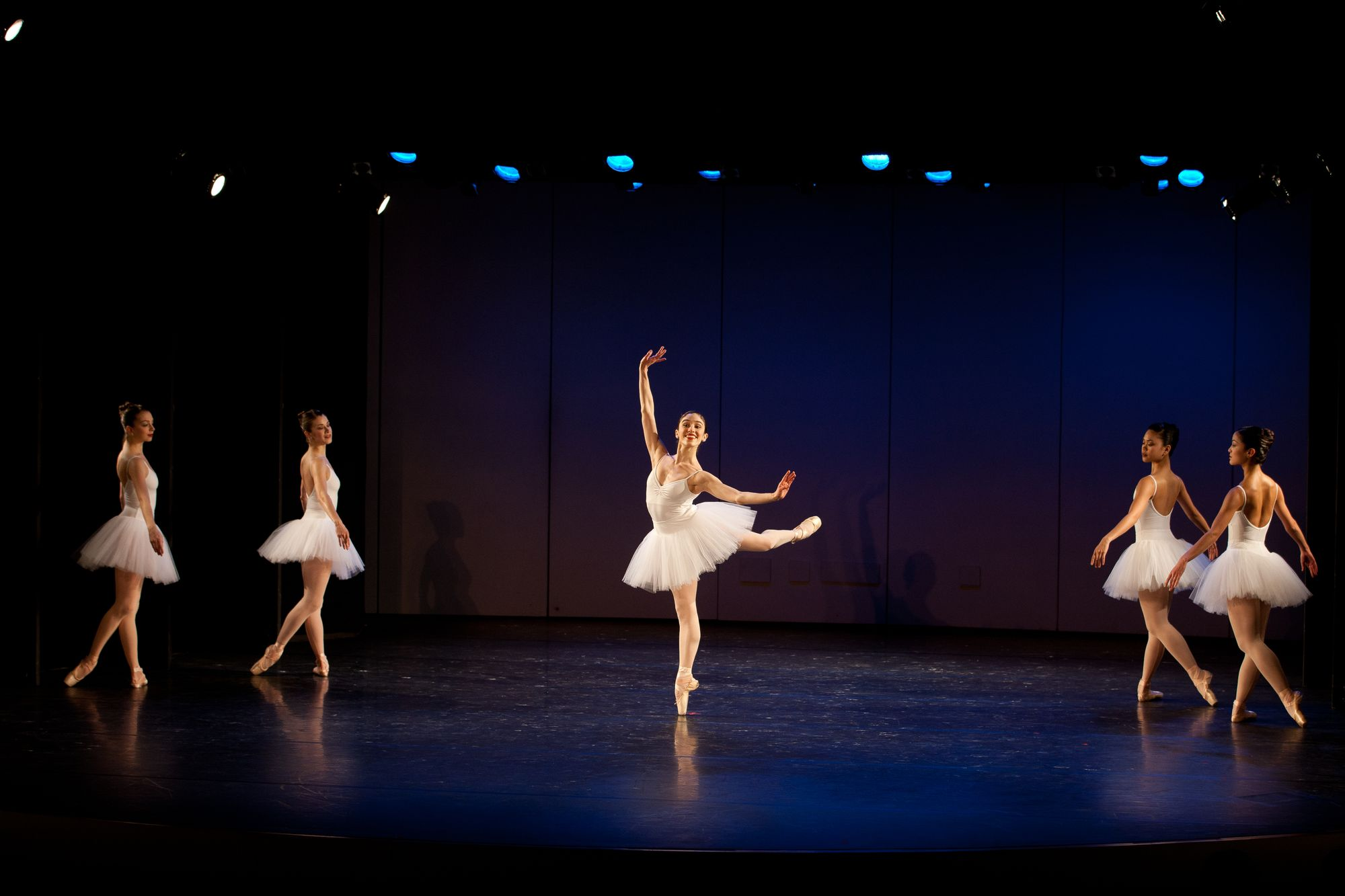Exotic Classicism

Pacific Northwest Ballet: Petipa Exotique
Works & Process
Peter B. Lewis Theater
Solomon R. Guggenheim Museum
New York, NY
February 23, 2014
The audience in New York's Guggenheim Museum watched a rare recreation of some of the French Marius Petipa's Russian choreography danced by performers from Seattle's Pacific Northwest Ballet, based on manuscripts in the Harvard Theatre Library's Sergeyev Collection, originally smuggled from Russia by the refugee Nicholas Sergeyev, and sold to them by the heirs of the British dance director Mona Inglesby who had purchased them after Sergeyev died in France. The geographic complexity seems routine, though, compared with the fabulously melodramatic plots described with affectionate humor by Doug Fullington, the host of the performance.

Mr. Fullington, who lives in Seattle and works for the Pacific Northwest Ballet, has studied the Sergeyev notations, and worked with the dancers to recreate some of the dances. Several of these are somewhat familiar to Western audiences from current productions (the odalisques dances from "Le Corsaire" and the dances from "La Bayadere") but some were from the long-lost "Le Roi Candaule", a work, according to Mr. Fullington's fascinating notes, based on writings by Herodotus and Plutarch about the goings on of the usurping King Candaule of ancient Lydia and his arrogant wife. This allowed Petipa, as Mr. Fullington explained, to insert dances having nothing to do with the plot, including one about a frisky new born butterfly and four butterflyettes. The music was played live by two violinists, Michael Jinsoo Lim, the Ballet's concertmaster, and Brittany Boulding, the associate concertmaster, using the original rehearsal scores from the Sergeyev collection. The butterflies pranced to Pugni, as revised by Drigo, in an absolutely charming vignette, full of petit batterie and linked arms. (I suspect that any similarities to the more famous four little swans is not coincidental.) The dancers wore unadorned practice tutus, and danced on a bare stage, though there were some 19th century photos projected so the audience could get a flavor of the imposing grandeur of those works. This let the audience concentrate on the bones of the choreography, and showed that these were very strong indeed.

Even the brief little butterfly dance was beautifully constructed, building in excitement from the birth with slightly tentative flutterings to a growing exuberance, shown by lots of arabesques. Leta Biasucci was charming as the butterfly, showing some wonderfully unexpected filigreed arms. Apparently these butterflies kept company with the gods, since the original of what we know (sort of) as the Diana and Acteon from "Esmeralda" (set in France) was originally a pas de trois for Diana, Endymion, and a satyr who cavorted in ancient Lydia. The sections that could be recreated were more formal than the bare-chested athleticism of the current gala staple, and, to my mind, more rewarding. Diana, Lesley Rausch, pranced through her variation holding a bow (charming, but I suspect desceptively difficult). Endymion, Seth Orza, didn't get his variation--it is lost apparently, but partnered with a gracious dignity, lost from the current versions. The satyr is a demi-caractere part, the only non-classical variation of the evening, and Kyle Davis got lots of beaten steps and fast, bent-legged jumps. He performed cleanly, but wasn't able to pull out any of the characterization the role must have had.
There are characters galore in "Le Corsaire", and Lesley Rausch as the frequently kidnapped Medora got to show off for the smitten Conrad of Orza in a recreation of the grotto scene. There was more mime and less panting than the much-revised version currently performed by ABT. The original dancers, of course, as shown by the photograph, were huskier than today's dancers, and certainly wore more clothes, so we can only get a glimpse of the original, but again, the structure and variety of the choreography shown through.
The evening opened with the famous dance of the Odalisques from "Le Corsaire". A modern audience would recognize them, though the notated ones had a charm not seen now in our more athletic age. The final one, for example, which has become a test of turns--will she do three or four pirouettes going for the gold--had turns, but they were singles combining a bouncy little jump, and unexpected bit of joy.
Mr. Fullington also reconstructed the three Bayadere solos. Again, these were certainly recognizable, but the older ones had more petit batterie and generally went at a faster clip. The first, the polka variation, was packed with little steps, and the dancer, Lieta Biasucci, did fall, but recovered nicely. The cabriole variation was more genteel, as the dancer didn't try to whack her nose with her legs, and had more arm variations; Angelica Generosa gave the beautiful choreography a gorgeous flow. The final variation, which in modern versions is often performed first, was much faster, so the balances weren't as strained, but it ended in the same charming run on point.
It turns out, according to Mr. Fullington's research, that the famous scarf pas de deux in the Shades scene was originally a solo, or rather a pas de deux for Nikiya and scarf, which, by stage magic, floated up to the sky after it was no longer needed. Mr. Fullington also recreated some of the Petipa last act, which disappeared from performing tradition in the 1920's, though it was briefly revived by the short-lived Maryinksy original version. The original betrothal had to wait until the fourth act, where Nikiya (Liora Neuville) interrupted the proceedings, much to Gamzatti's (Lesley Rausch) dismay and to Solor's confusion (Seth Orza and Kyle Davis both got a shot at the hero--you had to listen to Mr. Fullington's explanation of the double Solors). There were some wonderful touches that have disappeared; I was especially taken by Solor's lifting Nikiya, tossing her up and catching her, as if she really were a vision.
It is surely a tribute to the evening, but I was left wanting so much more. There are so many other sides of Petipa left unexplored. The triumphant geometry of the ensemble choreography is of course impossible in a setting like this, but it would be so interesting to examine some of the character variations he did. But in the meantime, anyone can enjoy this presentation, thanks to the generosity of the Guggenheim, which has made the video available here. Petipa Exotique.
copyright © 2014 by Mary Cargill



